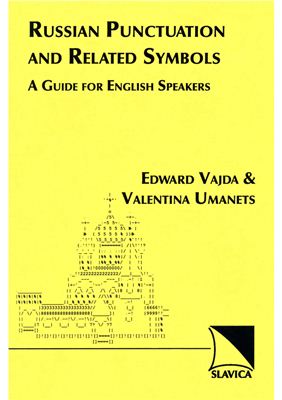Категория: Учебное пособие.
Год выпуска: 2004 г.
Автор: Edward J. Vajda, Valentina Umanets.
Издатель: Slavica.
Язык курса: Английский.
Кол-во страниц: 266.
Although punctuation is crucial to even basic written literacy in any European language, Russian language textbooks designed for English speakers routinely fail to provide even basic information on this important facet of written Russian. This new, user-friendly textbook is the first pedagogical description of Russian punctuation ever written for English-speaking students. Designed for the advanced beginner or intermediate student, it can likewise be used profitably by fluent speakers who desire to improve their command of written Russian. Beginning with an overview of Russian syntactic categories, the book moves on to cover each Russian punctuation device and its rules of usage in Written Standard Russian. Special emphasis is placed on instances where English and Russian use the same mark of punctuation for different purposes. A final section describes the functions of other punctuation-like symbols, such as the hyphen, the capital letter, the slash, and the period used in abbreviations. Each section is accompanied by exercises structured to test comprehension of the material as it is being covered. An appendix provides suggested solutions to all exercises. This book fills an important gap in English-language teaching of Russian and should be used in every undergraduate Russian language program.
Принципы русской пунктуации для говорящих на английском языке.
Год выпуска: 2004 г.
Автор: Edward J. Vajda, Valentina Umanets.
Издатель: Slavica.
Язык курса: Английский.
Кол-во страниц: 266.
Although punctuation is crucial to even basic written literacy in any European language, Russian language textbooks designed for English speakers routinely fail to provide even basic information on this important facet of written Russian. This new, user-friendly textbook is the first pedagogical description of Russian punctuation ever written for English-speaking students. Designed for the advanced beginner or intermediate student, it can likewise be used profitably by fluent speakers who desire to improve their command of written Russian. Beginning with an overview of Russian syntactic categories, the book moves on to cover each Russian punctuation device and its rules of usage in Written Standard Russian. Special emphasis is placed on instances where English and Russian use the same mark of punctuation for different purposes. A final section describes the functions of other punctuation-like symbols, such as the hyphen, the capital letter, the slash, and the period used in abbreviations. Each section is accompanied by exercises structured to test comprehension of the material as it is being covered. An appendix provides suggested solutions to all exercises. This book fills an important gap in English-language teaching of Russian and should be used in every undergraduate Russian language program.
Принципы русской пунктуации для говорящих на английском языке.

